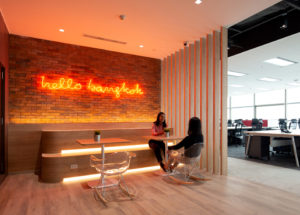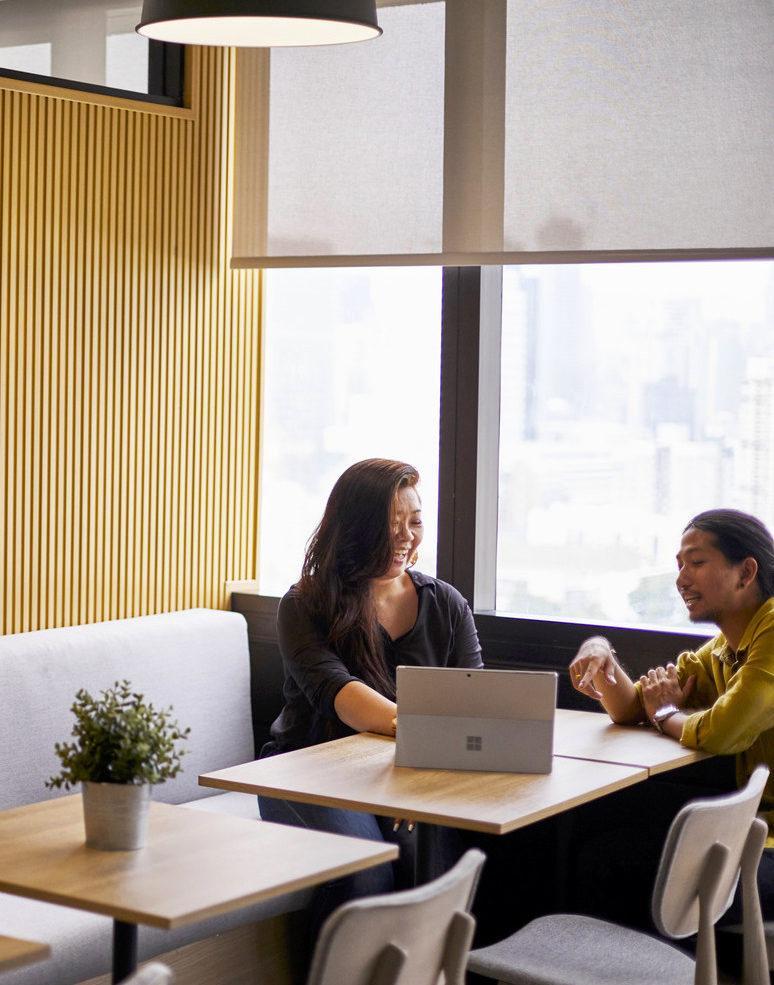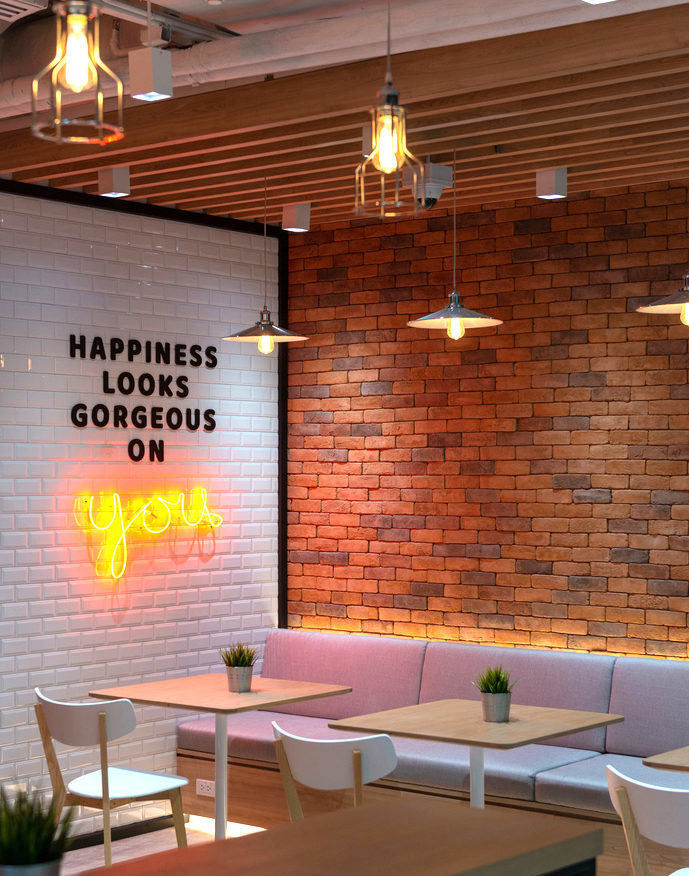Three unexpected ways coworking design is disrupting your workplace

Corporate office design is softening its hard edges to create flexible, social and creative places to be. We talk to Associate Design Director of dwp, K.Ya Kittivoraphongkij about how coworking spaces have changed the way we think when we think about designing the office.
When you think of ‘traditional office design’, whether Mad Men-gen opulence, faceless cubicles from The Office; or even latter day open-plan layouts spring to mind; workplace design is a literal and figurative reflection on rigidity. Bureaucratic systems built on a firm foundation of static desks (piled high with paper) and lined with chunky chairs: everyone knows where they sit, and everyone knows where they stand in the company structure.
But there’s a new disruptor on the block. A social, flexible and high-tech upstart called ‘the coworking space.’ And rather than fitting into formulaic office templates, they have conversely had a major impact on mainstream office design. The shift originates in the way office space is used, the trend is to do away with static office furniture (even the most stalwart: the desk) and the outcome is flow.
Democratic design
The coworking space business model has thrived in urban environments where start-ups, up-starts, creatives and digital nomads thrive. The design for the new workplace is an agile model that views the users of the space less as ‘occupants’ and more as ‘consumers’. This has inspired new operating systems driven by workers rejecting the idea of a traditional career, demanding the technology to eschew the desktop. Coworking design is for people who want to work anywhere, anytime, their way. Ya says: “Today’s office designs are following suit. Innovation and technology is democratising the workplace. Workers are demanding environments where they are empowered to support their needs – whether creative, time or technology driven. A great example of this is KBank Private Banking Office. Even in a traditional bank culture an agile environment was adopted with hot-desking technology and a clear desk policy.”
Dynamic design
Coworking workplace design is less committed. It is adaptable. Dynamic spaces that change in a way that is cognisant of short and long term needs. “Office designers now think ‘flexibility’ over ‘fixed’,” says Ya.
Architects and designers are designing the workplace to create communities that collaborate. And by rewiring social interactions the organisational culture is evolving. Ya adds: “A good example of this is the Department of Finance Headquarters, Abu Dhabi, UAE. We created functional spaces that promote teamwork with innovative design and unique, carefully thought through space planning.” The office features open and closed meeting spaces, collaboration spaces, plus nomadic and community workspaces that establish a truly agile work environment that mimics a coworking space.
Designer design
Like hotels, coworking inspired offices stand out by having vivid, creative interior design. There are a variety of resources that support a variety of work styles. Today’s office follows suit (or no suit as the case may be). Gone is the ‘one size fits all’ approach. The end result is offices that are aesthetically distinct and functionally more varied. In this environment, office designers are given more creative freedom than ever to create spaces that strengthen interactions and communication, responsive to the needs of the team. Ya adds: “Innovative spaces open new ways of sharing; even between different disciplines. I believe it is these creative and flexible places that lead to new and exciting ideas. dwp designed the Bangkok headquarters for JD Central, the joint venture between Central Group and JD.COM; a Chinese e-commerce company. Their digitally themed, creative and dynamic office space is modelled very successfully on design-led, technology driven coworking.
The way of corporate coworking
As coworking continues to gather popularity, and the ideas that define it become more widely embraced, so its design and cultural influence will be felt in all types of offices everywhere and in every way. Office layout, like office culture, is now democratic, dynamic and extremely well designed. The age of corporate coworking has been born.
dwp designs office spaces with cutting edge creativity for optimal use of space, workflow and light. Office spaces that help organisations achieve a competitive advantage by aligning workplace culture with digital transformation and modern work practices.
Download our Workplace Capability Statement or contact nichary.p@dwp.com in Bangkok or bradley.s@dwp.com in Australia to find out more about profit by design.
Tags: Abu dhabi, Agile workspace, Archi, Architect, Architecture, Artist, Asia, Bangkok, Bar, BIM, Blog, Boutique, Business, Civic, Construction, Content, Creativity, Culture, Design, Designer, Digital, Digital technology, Digital transformation, Digitisation, Drink, Dubai, Education, Experience, F&B, Food, Future, Health, Hicap, Ho chi minh, Hospitality, Hotel, Hotel design, Information, Innovation, Interior, Interior design, Interior designer, Interview, Knowledge, Lebua, Lifestyle, Luxury, Luxury design, Luxury interior, Marriott, Profile, Residential, Restaurant, Saigon, Sky, Studio, Success, Sustainibility, Tech, Technology, Thailand, Trends, Video, Vietnam, W hotel, Women





